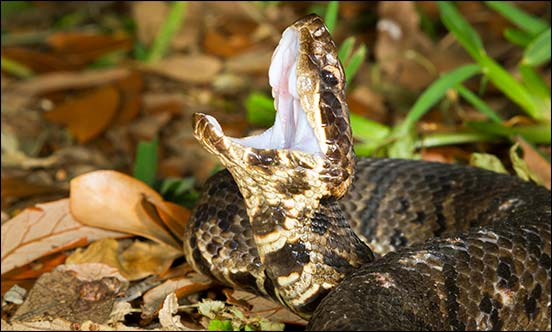
Dealing with Snakebite
Snakebite is sometimes a serious problem in livestock. Here are tips on dealing with bites.
The rattlesnake is the most common poisonous snake in the United States, but there are several other pit vipers, including copperheads and cottonmouths (also called water moccasins), that can be dangerous. Rattlesnakes give some warning when an animal approaches, but copperheads may just try to hide — and the animal might step on them and get bitten.
The danger or potency of a bite depends on the amount of venom injected by the snake and the type of toxin, which can vary depending on the species or variety of snake.
A bite on the leg is usually not as dangerous as a bite on the face. Swelling from a bite on the nose, for instance, may cause death from suffocation if the animal cannot breathe. Rob Callan, professor at Colorado State University in the Department of Clinical Sciences and head of the Livestock Medicine and Surgery Service, says most bites are on the lower legs, unless a curious animal approaches the snake to try to smell it.
“A bite on the leg results in a swollen leg, and the biggest problem would be infection,” he says.
“If you see the animal bitten, or suspect it was bitten, it is important to get that animal on an antibiotic. Bacteria proliferate in the damaged, dying tissue. Most broad-spectrum antibiotics will work to prevent/combat these infections,” says Callan.
Some animals develop fever and/or septicemia, so it is important to use antibiotics and prevent these problems. The bite is painful, so treatment with non-steroidal anti-inflammatory medications can help reduce the pain as well as the swelling.
“A person can use flunixin meglumine (Banamine or generic versions). Monitor the infection. In some cases it may require further intervention to surgically debride the tissues (to get rid of necrotic areas) or drain and treat an abscess that forms,” he says.
Swelling may be severe.
“One of my first cases was a bull with a hind leg swollen clear to the stifle. We didn’t know what caused such horrendous swelling, so we put the bull onto the table and looked at the leg more closely. We clipped the hair, and could see multiple double fang marks all the way up the leg,” Callan reports. “I don’t know if that bull stepped into a nest of snakes or stepped on the tail of a snake and it just kept biting. We treated the wounds, put the bull on antibiotics, and he recovered.”
Usually the toxins don’t have significant negative long-term effects on large animals, like adult cattle. Bites in the face can be an emergency, however, and you need to provide an alternate way for the animal to breathe.
“One method is to place a piece of hose up each nostril, all the way through the nasal passages to maintain an open airway, before they swell shut. If we can’t get an airway through the nostrils, we put in a tracheostomy,” Callan explains. This involves cutting through the skin and into the windpipe, and inserting a small hollow tube to keep it open until the swelling goes down.

Editor’s Note: Heather Smith Thomas is a cattlewoman and freelance writer from Salmon, Idaho.






